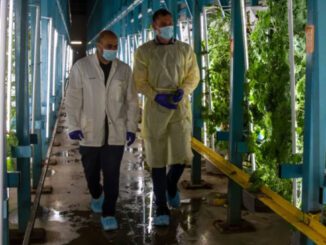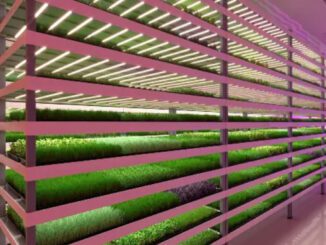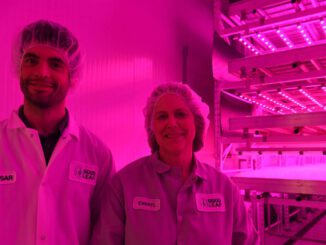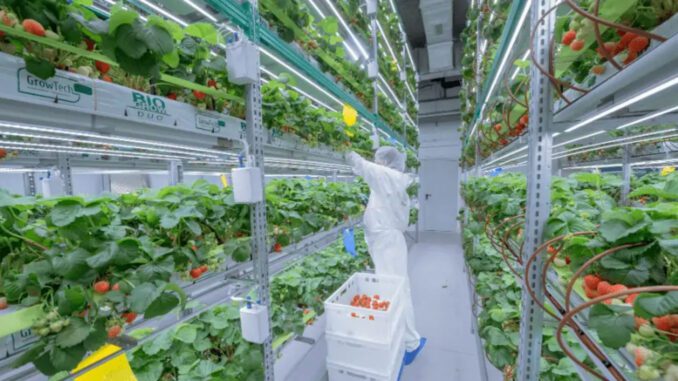
From Japan to Iceland, futuristic vertical farms are starting to bloom
Indoor farming is a growing trend in urban centers, where a single facility can grow millions of heads of lettuce.
Vertical Farms | by Mihai Andrei November 9, 2022 |
In 2016, a new farm in Japan made headlines. It wasn’t your average farm — instead of using soil, it used a hydroponic system, and instead of using sunlight, it used artificial LEDs. But the farm could grow 12,000 heads of lettuce per day, close to urban areas where the product is in high demand.
This isn’t an isolated example. Just one year later, another lettuce vertical farm was established in Iceland, producing a variety of greens that it sells to restaurants and retailers, without using any sunlight whatsoever. But are these isolated examples, or is vertical farming truly coming into its own?

Farming, but indoor
When you think about indoor farms, something like a greenhouse likely pops up. But a sweeping trend is revolutionizing indoor farming, moving it from the horizontal to the vertical — and it’s no longer just a concept. All over the world, we’re seeing examples of vertical farming projects, and while significant challenges still exist, the appeal of the technology is hard to ignore.
Indoor farming is a new and rapidly growing trend that has significant benefits over traditional agriculture methods, including increased efficiency and sustainability. Indoor farming can also help to combat climate change by reducing the amount of greenhouse gas (carbon dioxide, methane) released into the atmosphere and reducing the need for pesticides.
There are several different ways to do indoor farming, but the most common approach is to use hydroponic systems. These systems rely on water systems rather than soil to support plant growth, creating a controlled environment for the plants to grow in efficiently. An array of sensors designed specifically for this ensure that waste is minimized and resources are recycled whenever possible. Hydroponics also allows farmers to grow crops without dealing with pests or disease outbreaks, and it requires minimal land area compared to traditional agriculture methods. Because you essentially build the farm vertically, you can use places like former factories or warehouses.
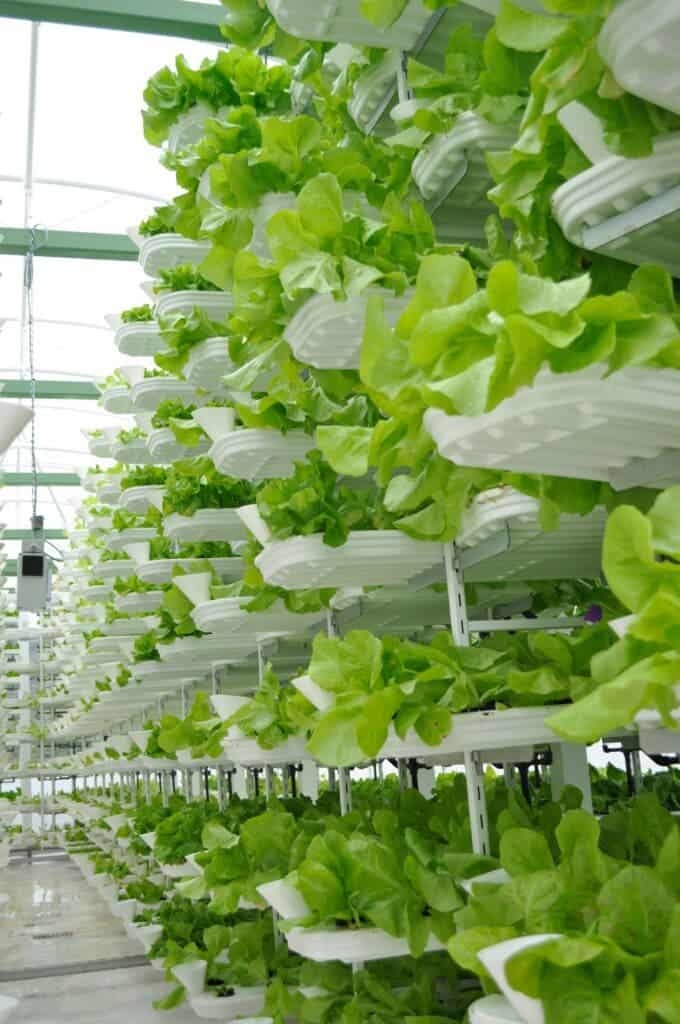
Herein lies one of the major advantages of this technology: because it allows for year-round production (which reduces costs and helps ensure food security) and can be done in smaller places, it’s excellently suited for urban (or near-urban) growing. This reduces the costs and environmental problems associated with transportation.
Another problem that vertical farms address is waste. Conventional farms produce a lot of waste, which often ends up in rivers and other waterways. Indoor farms use water resources more efficiently because they don’t need to irrigate plants with water from outside. They also have the ability to recycle wastewater into fertilizer or animal feed, making for a pretty sustainable system that doesn’t require much supervision (most of the work is automatized).
Unsurprisingly, this technology has drawn the eye of urbanized nations like Japan or Singapore, where the land surface is a scarce commodity.
For centuries, Japan’s agriculture has been essential for the country’s survival — and given its rough landscape, often rocky soils, and steeped landscape, agriculture in Japan is not easy. But despite adversity, Japanese farmers have endured and managed to crop up a reliable system. Until recently. Climate change has rendered agricultural work in Japan to be a risky business. From extreme weather events to drought and flooding, climate change has taken a big toll on farmers in Japan, and climate change is only expected to decrease both the quantity and the quality of crops in Japan (like in most places in the world). In addition, labor resources are scarce in Japan, and there are plenty of buildings that could be repurposed.
This is where vertical farming could come in.
In the Shizuoka Prefecture, a facility that’s around 20,000 square feet (0.2 hectares) grows a whopping 12,000 lettuces a day (lettuce is excellently suited for this type of farm). Farmers set up the light regime for the plants (using LEDs), as well as the temperature and humidity level, and enjoy round the year crops. Not only is the area required for the yield much lower than with conventional methods, but the water usage is also lower (10-20 times lower).
More recently, a farm in Kyoto developed by a company called Spread became a record-breaking facility that also introduced bees to pollinate its strawberries, achieving stable pollination under LED conditions and showing that there’s plenty of unexplored opportunity within vertical farms.

Singapore is also betting on vertical farms with one farm established in 2022 producing 500 tonnes of greens each year, in addition to its previous projects. Being able to grow food directly in urban areas means you can bring it to consumers quickly and inexpensively.
Meanwhile, Iceland is taking advantage of its ability to produce cheap, sustainable energy using geothermal sources to fuel a large vertical farm. Iceland has constantly had a problem of having to import food, and Iceland has one of the most expensive food markets in the world due to this. But Andri Bjorn Gunnarsson, founder and CEO of VAXA, the company behind the vertical farm, says Iceland also has some advantages that make it suitable for vertical farming.
“We need smarter ways than we currently have to produce food for a lot more people,” Gunnarsson says. “To take the first steps in a young industry like vertical farming, the Icelandic market is ideal in many ways,” he says, pointing to the country’s clean water, its educated workforce, and relatively short distances, which make logistics easier. What’s more, 100 percent of Iceland’s electricity is generated renewably. As Gunnarsson says: “If you want to run a vertical farm as a sustainable business, you must have renewable electricity.”
These are not isolated examples. It’s estimated there are more than 2,000 vertical farms in the US, and the market is expected to grow $4.21 billion in 2021 to $5.04 billion in 2022. While that’s still very low compared to global agriculture, it’s a big growth that shows little signs of slowing down.
For decades, the advantages of vertical farms have been touted, but now, it seems that finally, they’re stepping into the forefront. The ability to grow plants anywhere, the proximity to urban areas, and the reduction of workforce and transportation seem to be adding up to a tipping point.

So far, indoor farms have shown great potential for increasing food production while minimizing environmental impact. But that’s mostly the case for the use of resources like land, water, and fertilizers — energy is a different problem.
The innovation that makes vertical farms even possible is LEDs. LEDs are more efficient than traditional light sources (such as incandescent and fluorescent bulbs), they last longer than conventional lighting, and produce less heat and UV. But even LEDs do consume some energy.
Vertical farms don’t really offer transparent data about how much energy they use, and critics say vertical farming isn’t really as green as it claims. For instance, a 2021 report estimated that on average, greenhouse growers used 15-20 times as much energy than outdoor farmers — while vertical farms used a little over 100 times as much energy as outdoor lettuce growers in Arizona.
But other experts are not convinced. When you start to incorporate other hidden energy costs (like transportation and fuel usage of things like tractors used in farms), the difference starts to subside. If you’d also incorporate the negative externalities of farming (like fertilizer pollution and soil erosion), the balance truly starts to even out.
Still, it’s almost guaranteed that vertical farms use more energy than traditional agriculture, but how much more is still unclear. Even so, you end up with a trade of less land and water use for more energy, and that could be a trade-off that’s well worth it, especially in areas where energy is plentiful (like Iceland) and where land resources are scarce (like Japan or Singapore). The nature of the produced energy is also significant: if we’re talking about renewable energy, then the carbon footprint will go down dramatically — but if you have to burn coal or gas to produce the energy for a vertical farm, it’s far less likely that the farm can truly be sustainable.
Ultimately, indoor farms aren’t going to replace traditional agriculture anytime soon. It’s not an either-or type of proposition. The yield and reliability of a vertical farm make it a desirable option in some instances, especially for large cities with few agricultural areas around them, but the reliability on artificial lighting poses a fundamental (but surpassable) problem. With agriculture producing up to a third of all our greenhouse gas emissions and being a main cause of deforestation and environmental degradation, indoor vertical farming can be a suitable solution, at least in some instances. Improvements in renewable energy and farming technology will only make it even more appealing.
Original Article: https://www.zmescience.com/science/agriculture-science/indoor-futuristic-japanese-vertical-farm-already-generating-12000-heads-lettuce-day/

